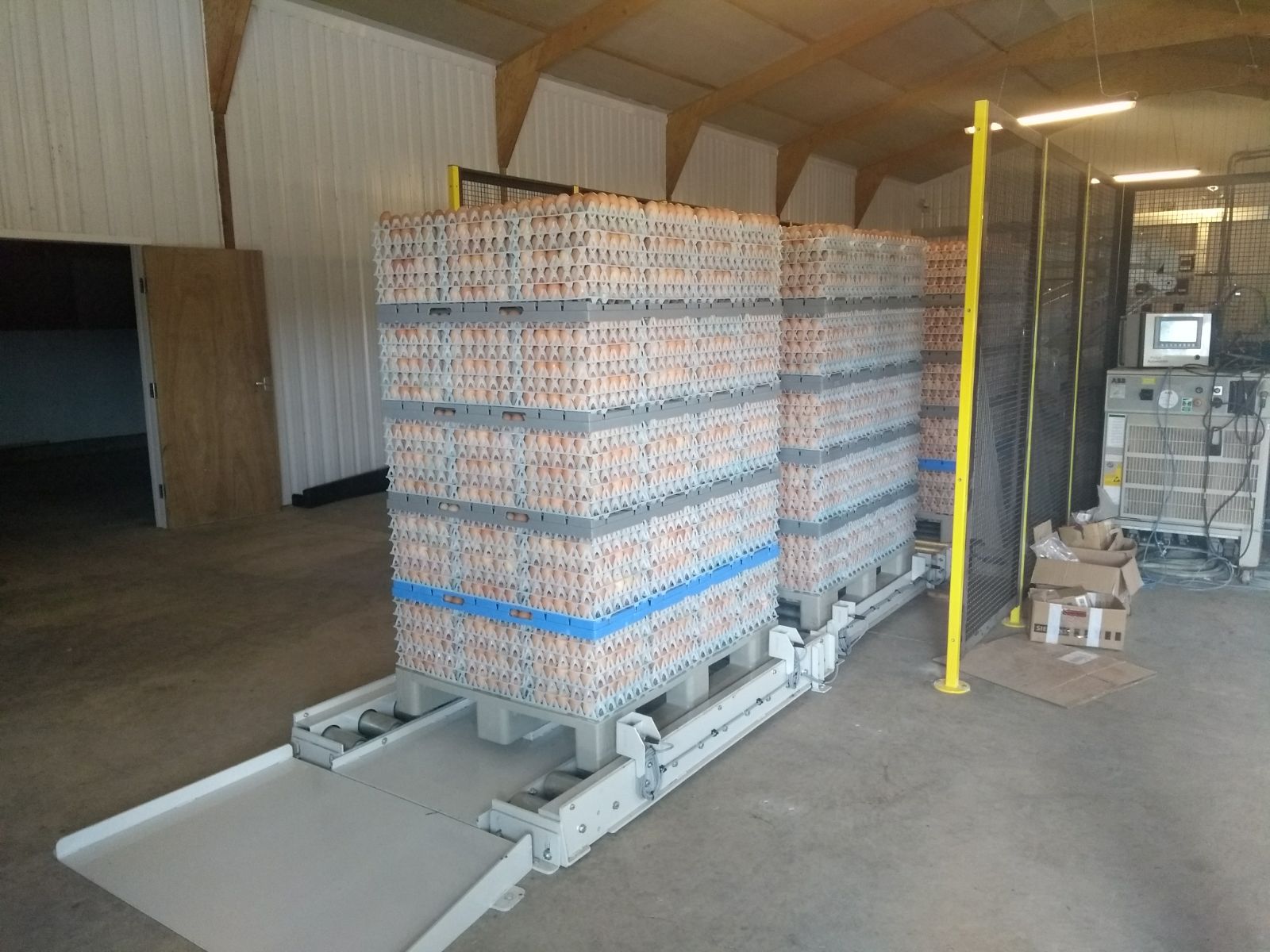First published in the Ranger, June 2018 edition, we discuss Martin Lawrence of Meadowside Free Range Eggs Ltd. He shows how embracing technology on his farm in mid-Wales has helped him deliver gains in productivity and improved conditions for his flock.
History
After many years rearing sheep and beef on their 150-acre family farm in Crossgates, Powys, Martin Lawrence persuaded his father to change direction and invest in poultry. Starting with two sheds housing 11,000 birds each, they now have 64,000 birds housed in two multi-tier sheds.
Martin holds no sentimental view of traditional farming methods. With production currently at 88.8% at week 72, Martin’s flock is still fully feathered, and even in February with temperatures of two degrees centigrade, large numbers ventured outside. This is no accident; constant thought and planning for improving techniques are applied to every aspect of the birds’ welfare.
Investing in technology
Martin is keen to ensure that his farm is future fit, reducing his labour costs, through the use of modern technology. To make his egg packing as efficient as possible, Martin brought in Ben Morgan, an expert in robotics and automation at Prosys Automation Ltd.
Ben has worked for some well-known food companies such as Tyrell’s and Muller as well as manufacturers in the automotive industry, including Aston Martin; acquiring experience in implementing bespoke robotic solutions to boost efficiency.
“I believe farming is 40 years behind the automotive industry,” said Ben. “However, I’m seeing an increase in interest in technology, with a younger generation coming through, eager to understand how technology can help them.”
Man and machine: conveyor to packing
There is a unique egg collection and packing set up at the Meadowside; using a mixture of mechanics, robotics, Martin needs just one person to pack the eggs – and it is usually him! Two conveyor belts deliver the eggs to the packing room from both sheds. Where Martin’s system differs is that one of the houses is 120 meters away In the packing room he sorts the seconds, before the eggs are fed into two packing machines. From there, a robot transfers 4 x trays of 24 eggs to a pallet.
Martin decided to upgrade the packing machinery but, rather than replacing what they had with a newer, larger, option, he opted to invest more to upgrade the original line and install a second machine. With two packing machines working in parallel, the line does not grind to a halt if one stops working, eliminating precious downtime.
Robotics: egg trays to pallet
Ben helped to install a refurbished robot from the automotive industry. Machinery tends to be renewed every 10 years in the automotive sector, so there is no shortage of robots in excellent condition ready to begin a second career on the farm. Ben reconditioned the robot and re-programmed it it for its new role on Martin’s farm.
After installing 15 similar robotic systems, Ben understands the requirements of packing eggs economically. He creates bespoke solutions, reducing the number of machines and the number of moves each machine has to make to improve efficiency at every stage.
The machinery has touch screen controls that show every part of the process and allows for trouble shooting at each stage and the intuitive nature of the system enables anyone to manage the process in Martin’s absence.
Packing at the Meadowside free range can be done by just one member of staff with some help from the family. With the packing completed before midday, Martin is able to spend his afternoons working on other projects.
Play the video below which shows it all working together in the packing shed at Meadowside Free Range Eggs Ltd.
With the time saved by the machinery and smart robots, he can also focus more on the welfare of his flock. He spends time observing his birds to better understand how to improve their conditions, and so their productivity.
Investing in the whole team
An operation like this is about more than just robots, and efficiencies can be made in many places. Martin buys his pullets and feed from one supplier, Humphrey Feeds & Pullets, to ensure a consistent approach to nutrition, and he thinks of his poultry specialist at Humphrey, Gwenda Wozencraft, as a key part of the team.
Martin believes that it is crucial for farmers to make the most of what they have. “It’s a business at the end of the day,” he said. “You’ve got to do what you can to make it pay”.
He believes he can learn from everyone he meets and everyone he works with; the feed and pullet supplier, his accountant and bank manager, are all part of his team, working towards the same goal.
Continuous innovation
Martin does not believe in sitting on his laurels and in fact, since meeting with him in February, he has installed a system to automate complete pallets (up to 3 at a time), saving even more labour.
He also meets with Ben every 12 months to discuss how to further improve his operation; including cameras at bird level to help understand behaviour throughout the day, solar panels for self-sufficiency, and, in the future? One of the projects that Ben and Martin are currently working on, is to mount the robot on loadcells so that he can have a real time daily average egg weight for all of his eggs, to enable him to be on the front foot with regards the management and welfare of his birds.
Having never worked so hard for so little return when he had his sheep and beef enterprise, he now believes that automating his free range will provide him with a good long term return on his investment after a relatively short payback period.
For Martin, attention to detail is key to producing a high quality egg, and ensuring he gets the best possible return for his product will help him to achieve his ultimate goal: making sure his children have a secure financial future.




















